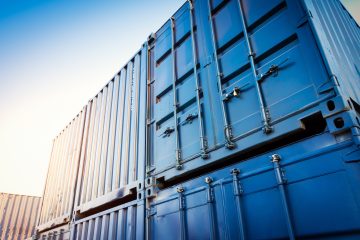Plasma cutting is a versatile and efficient method used in various industries for cutting metal and other conductive materials. It offers precision, speed, and the ability to work with a wide range of material thicknesses. To fully grasp how plasma cutting works, it’s essential to understand the basic components of a Plasma Cutting System. Let’s delve into these components and their functions in the plasma cutting process.
1. Power Supply
The power supply is the heart of a plasma cutting system. It generates the electrical energy required to create the plasma arc that melts and cuts through the material. Plasma cutting power supplies come in different types, including conventional DC power supplies and more advanced inverter-based power supplies. The power supply’s output is typically measured in kilowatts (kW) and determines the cutting capacity of the system.
2. Plasma Torch
The plasma torch is the handheld or mechanized tool that directs the plasma arc onto the material being cut. It consists of several components, including the torch body, electrode, nozzle, swirl ring, and shield. The electrode and nozzle are crucial for maintaining the plasma arc and controlling its shape and intensity. Modern plasma torches may also incorporate features such as automatic gas control and height sensing for enhanced cutting performance.
3. Gas Supply
Plasma cutting requires a gas supply to create the plasma arc and protect the cutting area from oxidation. The primary gases used in plasma cutting are compressed air, nitrogen, and oxygen, depending on the material being cut and the desired cut quality. For facilities consuming significant amounts of nitrogen, an on-site nitrogen generator can be a cost-effective alternative to purchasing pre-filled tanks. The gas supply system includes regulators, filters, hoses, and a gas delivery mechanism integrated into the plasma torch.
4. Cutting Table or Work Piece Support
A sturdy cutting table or work piece support is essential for holding the material being cut in place and providing a stable surface for the cutting process. Cutting tables may be equipped with features such as CNC (Computer Numerical Control) controls for automated cutting, slats or grids to support the material, and water or fume extraction systems to remove debris and gases generated during cutting.
5. CNC Controller
In automated plasma cutting systems, a CNC controller plays a vital role in controlling the movement of the plasma torch and coordinating cutting parameters such as speed, acceleration, and torch height. The CNC controller receives instructions from CAD/CAM software or manual input and translates them into precise cutting paths and operations. Advanced CNC systems offer features like nesting, multi-axis control, and real-time monitoring for optimal cutting performance.
6. Consumables
Consumables are replaceable components within the plasma torch that wear out over time and require regular maintenance and replacement. Common consumables include electrodes, nozzles, swirl rings, shields, and retaining caps. Proper maintenance of consumables is crucial for maintaining cut quality, preventing downtime, and extending the life of the plasma cutting system.
7. Cooling System
Plasma cutting systems generate heat during operation, especially in high-power applications. A cooling system, typically comprising coolant circulation pumps, heat exchangers, and cooling lines, helps dissipate heat and maintain optimal operating temperatures for the power supply, torch, and other components. Efficient cooling is essential for system reliability and longevity.
8. Safety Features
Safety is paramount in plasma cutting systems due to the high temperatures, electrical currents, and potential hazards associated with the process. Key safety features include automatic shutdown mechanisms for overcurrent or overheating conditions, emergency stop buttons, protective barriers or curtains, personal protective equipment (PPE) for operators, and comprehensive training on safe operating practices.
Conclusion
A plasma cutting system comprises interconnected components that work together seamlessly to achieve precise and efficient metal cutting. Understanding the basic components, their functions, and their importance in the plasma cutting process is essential for operators, technicians, and anyone involved in metal fabrication or manufacturing. A well-maintained and properly configured plasma cutting system ensures consistent cut quality, productivity, and safety in industrial cutting applications.




